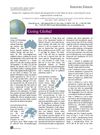Search
forLearn
5 / 18 resultslearn Osteopontin
signaling protein that, when suppressed, may grow hair by reducing inflammation and stem cell loss
learn Overview
learn Apple stem cell
learn PP405
mitochondrial pyruvate carrier (MPC) inhibitor by Pelage in early trials
Research
5 / 1000+ results
research Skin Structure
Human skin has multiple layers and functions, with key roles in protection, temperature control, and appearance.

research Dusko Ilic Explores the Latest Developments in the Field of Stem Cell Research and Regenerative Medicine
Stem cell research and regenerative medicine have made significant advancements in treating various diseases and conditions.
research Changes in the Proteomic Profile of Adipose Tissue-Derived Mesenchymal Stem Cells During Passages
Adipose stem cells show common protein changes as they grow, especially involving S100A6.

research High-Intensity Focused Ultrasound Application to the Scalp to Improve Androgenetic Alopecia in an Adult Woman
High-intensity focused ultrasound improved hair growth in a woman with no side effects.
research CUBIC Protocol Visualizes Protein Expression at Single Cell Resolution in Whole Mount Skin Preparations
The CUBIC protocol allows detailed 3D visualization of proteins in mouse skin biopsies.
Community Join
5 / 520 resultscommunity Can we have a thread that summarizes all treatments options in addition to the big 3 which we have some evidence for, their mechanism of action and whether they can be combined with the big 3(other than dermarolling)?
The conversation discusses hair loss treatments beyond the commonly known three, focusing on separating effective treatments from myths. Dutasteride and low-dose oral Minoxidil are mentioned as having clinical evidence for increasing hair counts, but with potential side effects.
community Finally, some real breakthroughs. A comparison of the two leading baldness treatments: PP405 versus ABS-201
PP405 and ABS-201 are promising treatments for male pattern baldness. PP405 shows rapid hair growth in human trials, while ABS-201 shows significant regrowth in animal studies but is still in early human trials.
community Rare Non responder to Finasteride, Dutasteride, and oral minoxidil
A user did not respond to finasteride, dutasteride, and oral minoxidil for hair loss after four years of treatment and is considering scalp micropigmentation (SMP). Other users suggest the hair loss pattern may indicate alopecia areata and recommend seeing a dermatologist.
community Wtf have we been doing for the last 30 years
Hair loss treatments like finasteride, minoxidil, and dutasteride work but have side effects. A permanent cure is still not available due to the complexity of hair loss and limited investment.
community C’est terrible - at my wits end
A 29-year-old woman is experiencing gradual hair thinning since age 15, suspects Androgenic Alopecia, and has tried 5% minoxidil with little success. She has purchased various hair loss treatments including minoxidil, dutasteride, finasteride, and spironolactone, but is cautious about starting them due to potential interactions with her ADHD medication.